#steampunk book
Text
Cover Reveal! "Go Away Girls: Vanished"
The third book in my Go Away Girls series is almost finished! It’s way overdue and I think it turned out pretty cool. Here’s what I’m considering as my blurb:
In the aftermath of the epidemic of the drug ‘Flight,’ Katherine and Audrey were hoping for things to go back to normal. However, some of Audrey’s fellow members of the Temple of the Great Mother have not been in contact and several…

View On WordPress
#go away girls#LGBT#LGBT fantasy#LGBT fiction#self published#self published writer#self publishing#steampunk#steampunk book#steampunk novel#Writing#writing update
4 notes
·
View notes
Text

Commande client: Réalisation d'un collier livre en simili cuir d'inspiration steampunk.
Lien facebook: https://www.facebook.com/profile.php?id=100032848166805&locale=lv_LV
#collier#collier steampunk#collier livre#livre miniature#livre steampunk#bijou original#création française#création artisanale#création lotoise#made in france#made in lot#steampunk book#steampunk jewelry#little book#necklace book#original necklace
0 notes
Text
Cover Creation - The Department of Curiosities Edition 2 - Paperback Wrap (2023)
https://karenjcarlisle.com/2023/07/07/cover-creation-the-department-of-curiosities-edition-2-paperback-wrap-2023/

The Department of Curiosities (book 1) Edition 2 is available from 1st July, 2023.
A steampunk tale of adventure, a heroine, mad scientists, traitors and secrets. All for the good of the Empire. Miss Matilda Meriwether has a secret. Actually, she has several. One of them has shaped her adult life. Another now controls it. Her Majesty Queen Victoria has control of the Empire. She is the Empire, and creator of its secrets. Sir Avery works for The Department of Curiosities – the keepers of secrets – especially if they are useful to the Empire.
When Tillie finds herself in the employment of The Department of Curiosities, she realises this is the perfect opportunity to uncover the truth she has been searching for. But the Queen has other plans for her.
youtube
Get your copy
Buy DIRECT from the Author (AU$15.99)
Live outside Australia? RRP AU$15.99 / US$10.99
Official paperback released 1st July, 2023
Video/Photography – Karen Carlisle
Music – Marathon Stocatto Atmosphere ©Louise Byrne
©2023 Karen Carlisle
Patrons received a sneak peek of this content.
#book blog tour#books#buy books#cover creation#cover reveal#cover video#Department of Curiosities#manuscript#new cover#new edition#novel#steampunk#steampunk book#video
0 notes
Text
I’m writing a book. It’s called Tocktick. It’s steampunk, every single main character is disabled and/or queer and it’s about an airship race around a colonised island (totally not Ireland at all).
955 notes
·
View notes
Text
Brian Merchant’s “Blood In the Machine”
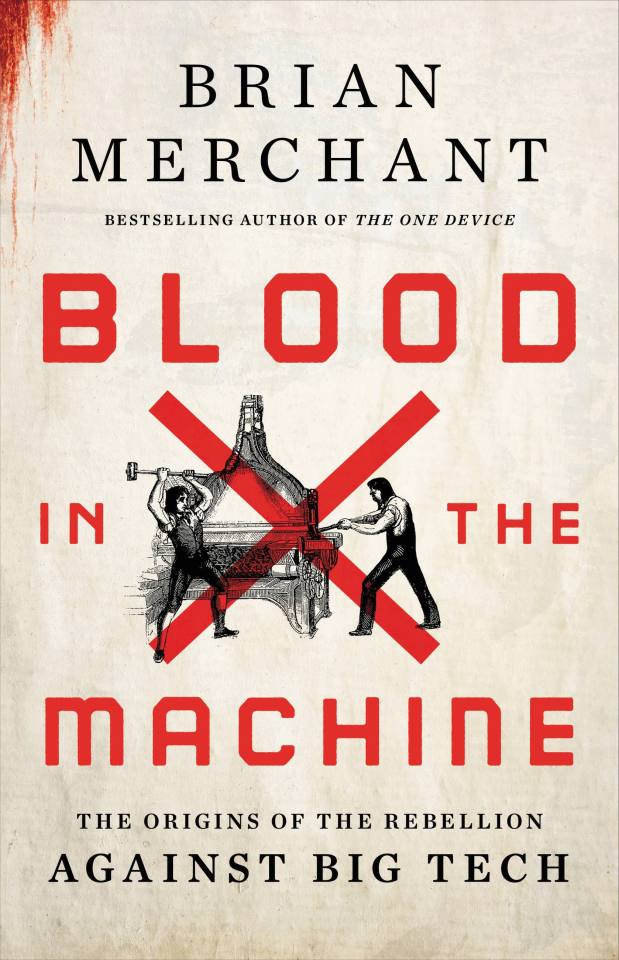
Tomorrow (September 27), I'll be at Chevalier's Books in Los Angeles with Brian Merchant for a joint launch for my new book The Internet Con and his new book, Blood in the Machine. On October 2, I'll be in Boise to host an event with VE Schwab.

In Blood In the Machine, Brian Merchant delivers the definitive history of the Luddites, and the clearest analysis of the automator's playbook, where "entrepreneurs'" lawless extraction from workers is called "innovation" and "inevitable":
https://www.littlebrown.com/titles/brian-merchant/blood-in-the-machine/9780316487740/
History is written by the winners, and so you probably think of the Luddites as brainless, terrified, thick-fingered vandals who smashed machines and burned factories because they didn't understand them. Today, "Luddite" is a slur that means "technophobe" – but that's neither fair, nor accurate.
Luddism has been steadily creeping into pro-labor technological criticism, as workers and technology critics reclaim the term and its history, which is a rich and powerful tale of greed versus solidarity, slavery versus freedom.
The true tale of the Luddites starts with workers demanding that the laws be upheld. When factory owners began to buy automation systems for textile production, they did so in violation of laws that required collaboration with existing craft guilds – laws designed to ensure that automation was phased in gradually, with accommodations for displaced workers. These laws also protected the public, with the guilds evaluating the quality of cloth produced on the machine, acting as a proxy for buyers who might otherwise be tricked into buying inferior goods.
Factory owners flouted these laws. Though the machines made cloth that was less durable and of inferior weave, they sold it to consumers as though it were as good as the guild-made textiles. Factory owners made quiet deals with orphanages to send them very young children who were enslaved to work in their factories, where they were routinely maimed and killed by the new machines. Children who balked at the long hours or attempted escape were viciously beaten (the memoir of one former child slave became a bestseller and inspired Oliver Twist).
The craft guilds begged Parliament to act. They sent delegations, wrote petitions, even got Members of Parliament to draft legislation ordering enforcement of existing laws. Instead, Parliament passed laws criminalizing labor organizing.
The stakes were high. Economic malaise and war had driven up the price of life's essentials. Workers displaced by illegal machines faced starvation – as did their children. Communities were shattered. Workers who had apprenticed for years found themselves graduating into a market that had no jobs for them.
This is the context in which the Luddite uprisings began. Secret cells of workers, working with discipline and tight organization, warned factory owners to uphold the law. They sent letters and posted handbills in which they styled themselves as the army of "King Ludd" or "General Ludd" – Ned Ludd being a mythical figure who had fought back against an abusive boss.
When factory owners ignored these warnings, the Luddites smashed their machines, breaking into factories or intercepting machines en route from the blacksmith shops where they'd been created. They won key victories, with many factory owners backing off from automation plans, but the owners were deep-pocketed and determined.
The ruling Tories had no sympathy for the workers and no interest in upholding the law or punishing the factory owners for violating it. Instead, they dispatched troops to the factory towns, escalating the use of force until England's industrial centers were occupied by literal armies of soldiers. Soldiers who balked at turning their guns on Luddites were publicly flogged to death.
I got very interested in the Luddites in late 2021, when it became clear that everything I thought I knew about the Luddites was wrong. The Luddites weren't anti-technology – rather, they were doing the same thing a science fiction writer does: asking not just what a new technology does, but also who it does it for and who it does it to:
https://locusmag.com/2022/01/cory-doctorow-science-fiction-is-a-luddite-literature/
Unsurprisingly, ever since I started publishing on this subject, I've run into people who have no sympathy for the Luddite cause and who slide into my replies to replicate the 19th Century automation debate. One such person accused the Luddites of using "state violence" to suppress progress.
You couldn't ask for a more perfect example of how the history of the Luddites has been forgotten and replaced with a deliberately misleading account. The "state violence" of the Luddite uprising was entirely on one side. Parliament, under the lackadaisical leadership of "Mad King George," imposed the death penalty on the Luddites. It wasn't just machine-breaking that became a capital crime – "oath taking" (swearing loyalty to the Luddites) also carried the death penalties.
As the Luddites fought on against increasingly well-armed factory owners (one owner bought a cannon to use on workers who threatened his machines), they were subjected to spectacular acts of true state violence. Occupying soldiers rounded up Luddites and suspected Luddites and staged public mass executions, hanging them by the dozen, creating scores widows and fatherless children.
The sf writer Steven Brust says that the test to tell whether someone is on the right or the left is simple: ask whether property rights are more important than human rights. If the person says "property rights are human rights," they are on the right.
The state response to the Luddites crisply illustrates this distinction. The Luddites wanted an orderly and lawful transition to automation, one that brought workers along and created shared prosperity and quality goods. The craft guilds took pride in their products, and saw themselves as guardians of their industry. They were accustomed to enjoying a high degree of bargaining power and autonomy, working from small craft workshops in their homes, which allowed them to set their own work pace, eat with their families, and enjoy modest amounts of leisure.
The factory owners' cause wasn't just increased production – it was increased power. They wanted a workforce that would dance to their tune, work longer hours for less pay. They wanted unilateral control over which products they made and what corners they cut in making those products. They wanted to enrich themselves, even if that meant that thousands starved and their factory floors ran red with the blood of dismembered children.
The Luddites destroyed machines. The factory owners killed Luddites, shooting them at the factory gates, or rounding them up for mass executions. Parliament deputized owners to act as extensions of law enforcement, allowing them to drag suspected Luddites to their own private cells for questioning.
The Luddites viewed property rights as just one instrument for achieving human rights – freedom from hunger and cold – and when property rights conflicted with human rights, they didn't hesitate to smash the machines. For them, human rights trumped property rights.
Their bosses – and their bosses' modern defenders – saw the demands to uphold the laws on automation as demands to bring "state violence" to bear on the wholly private matter of how a rich man should organize his business. On the other hand, literal killing – both on the factory floor and at the gallows – was not "state violence" but rather, a defense of the most important of all the human rights: the rights of property owners.
19th century textile factories were the original Big Tech, and the rhetoric of the factory owners echoes down the ages. When tech barons like Peter Thiel say that "freedom is incompatible with democracy," he means that letting people who work for a living vote will eventually lead to limitations on people who own things for a living, like him.
Then, as now, resistance to Big Tech enjoyed widespread support. The Luddites couldn't have organized in their thousands if their neighbors didn't have their backs. Shelley and Byron wrote widely reproduced paeans to worker uprisings (Byron also defended the Luddites in the House of Lords). The Brontes wrote Luddite novels. Mary Shelley's Frankenstein was a Luddite novel, in which the monster was a sensitive, intelligent creature who merely demanded a say in the technology that created him.
The erasure of the true history of the Luddites was a deliberate act. Despite the popular and elite support the Luddites enjoyed, the owners and their allies in Parliament were able to crush the uprising, using mass murder and imprisonment to force workers to accept immiseration.
The entire supply chain of the textile revolution was soaked in blood. Merchant devotes multiple chapters to the lives of African slaves in America who produced the cotton that the machines in England wove into cloth. Then – as now – automation served to obscure the violence latent in production of finished goods.
But, as Merchant writes, the Luddites didn't lose outright. Historians who study the uprisings record that the places where the Luddites fought most fiercely were the places where automation came most slowly and workers enjoyed the longest shared prosperity.
The motto of Magpie Killjoy's seminal Steampunk Magazine was: "Love the machine, hate the factory." The workers of the Luddite uprising were skilled technologists themselves.
They performed highly technical tasks to produce extremely high-quality goods. They served in craft workshops and controlled their own time.
The factory increased production, but at the cost of autonomy. Factories and their progeny, like assembly lines, made it possible to make more goods (even goods that eventually rose the quality of the craft goods they replaced), but at the cost of human autonomy. Taylorism and other efficiency cults ended up scripting the motions of workers down to the fingertips, and workers were and are subject to increasing surveillance and discipline from their bosses if they deviate. Take too many pee breaks at the Amazon warehouse and you will be marked down for "time off-task."
Steampunk is a dream of craft production at factory scale: in steampunk fantasies, the worker is a solitary genius who can produce high-tech finished goods in their own laboratory. Steampunk has no "dark, satanic mills," no blood in the factory. It's no coincidence that steampunk gained popularity at the same time as the maker movement, in which individual workers use form digital communities. Makers networked together to provide advice and support in craft projects that turn out the kind of technologically sophisticated goods that we associate with vast, heavily-capitalized assembly lines.
But workers are losing autonomy, not gaining it. The steampunk dream is of a world where we get the benefits of factory production with the life of a craft producer. The gig economy has delivered its opposite: craft workers – Uber drivers, casualized doctors and dog-walkers – who are as surveilled and controlled as factory workers.
Gig workers are dispatched by apps, their faces closely studied by cameras for unauthorized eye-movements, their pay changed from moment to moment by an algorithm that docks them for any infraction. They are "reverse centaurs": workers fused to machines where the machine provides the intelligence and the human does its bidding:
https://pluralistic.net/2021/02/17/reverse-centaur/#reverse-centaur
Craft workers in home workshops are told that they're their own bosses, but in reality they are constantly monitored by bossware that watches out of their computers' cameras and listens through its mic. They have to pay for the privilege of working for their bosses, and pay to quit. If their children make so much as a peep, they can lose their jobs. They don't work from home – they live at work:
https://pluralistic.net/2021/01/22/paperback-writer/#toothless
Merchant is a master storyteller and a dedicated researcher. The story he weaves in Blood In the Machine is as gripping as any Propublica deep-dive into the miserable working conditions of today's gig economy. Drawing on primary sources and scholarship, Blood is a kind of Nomadland for Luddites.
Today, Merchant is the technology critic for the LA Times. The final chapters of Blood brings the Luddites into the present day, finding parallels in the labor organizing of the Amazon warehouse workers led by Chris Smalls. The liberal reformers who offered patronizing support to the Luddites – but didn't imagine that they could be masters of their own destiny – are echoed in the rhetoric of Andrew Yang.
And of course, the factory owners' rhetoric is easily transposed to the modern tech baron. Then, as now, we're told that all automation is "progress," that regulatory evasion (Uber's unlicensed taxis, Airbnb's unlicensed hotel rooms, Ring's unregulated surveillance, Tesla's unregulated autopilot) is "innovation." Most of all, we're told that every one of these innovations must exist, that there is no way to stop it, because technology is an autonomous force that is independent of human agency. "There is no alternative" – the rallying cry of Margaret Thatcher – has become our inevitablist catechism.
Squeezing the workers' wages conditions and weakening workers' bargaining power isn't "innovation." It's an old, old story, as old as the factory owners who replaced skilled workers with terrified orphans, sending out for more when a child fell into a machine. Then, as now, this was called "job creation."
Then, as now, there was no way to progress as a worker: no matter how skilled and diligent an Uber driver is, they can't buy their medallion and truly become their own boss, getting a say in their working conditions. They certainly can't hope to rise from a blue-collar job on the streets to a white-collar job in the Uber offices.
Then, as now, a worker was hired by the day, not by the year, and might find themselves with no work the next day, depending on the whim of a factory owner or an algorithm.
As Merchant writes: robots aren't coming for your job; bosses are. The dream of a "dark factory," a "fully automated" Tesla production line, is the dream of a boss who doesn't have to answer to workers, who can press a button and manifest their will, without negotiating with mere workers. The point isn't just to reduce the wage-bill for a finished good – it's to reduce the "friction" of having to care about others and take their needs into account.
Luddites are not – and have never been – anti-technology. Rather, they are pro-human, and see production as a means to an end: broadly shared prosperity. The automation project says it's about replacing humans with machines, but over and over again – in machine learning, in "contactless" delivery, in on-demand workforces – the goal is to turn humans into machines.
There is blood in the machine, Merchant tells us, whether its humans being torn apart by a machine, or humans being transformed into machines.
Brian and I are having a joint book-launch tomorrow night (Sept 27) at Chevalier's Books in Los Angeles for my new book The Internet Con and his new book, Blood in the Machine:
https://www.eventbrite.com/e/the-internet-con-by-cory-doctorow-blood-in-the-machine-by-brian-merchant-tickets-696349940417



If you'd like an essay-formatted version of this post to read or share, here's a link to it on pluralistic.net, my surveillance-free, ad-free, tracker-free blog:
https://pluralistic.net/2023/09/26/enochs-hammer/#thats-fronkonsteen
#pluralistic#books#reviews#brian merchant#luddism#automation#history#gift guide#steampunk#makers#tina#inevitablism#reverse centaurs#amazon#arise
546 notes
·
View notes
Text









#moodboard#aesthetic#icons#pinterest#indie#history#pirates#fantasy aesthetic#fantasy#gold coins#steampunk#piratas do caribe#caraibes#pirates of the caribbean#fantasycore#outfit inspo#book inspiration#inspo#inspiration
255 notes
·
View notes
Text


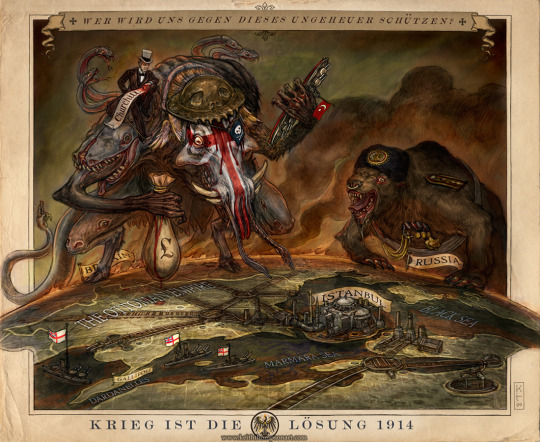
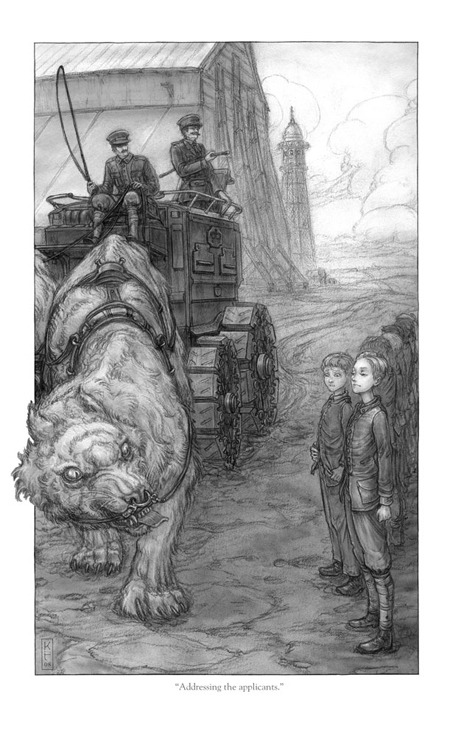
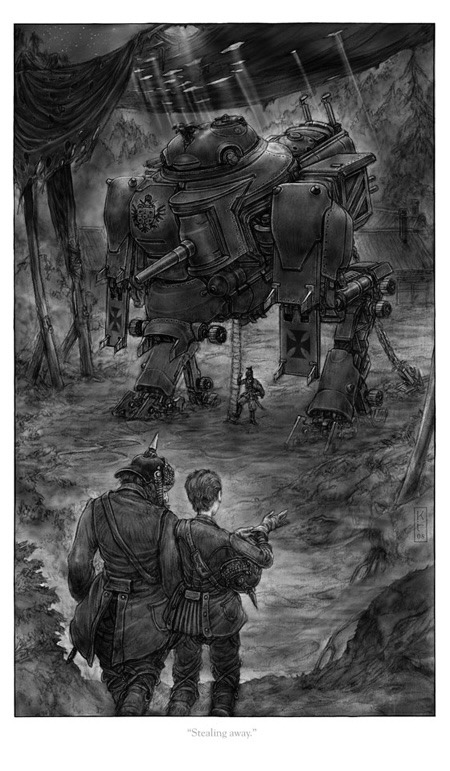

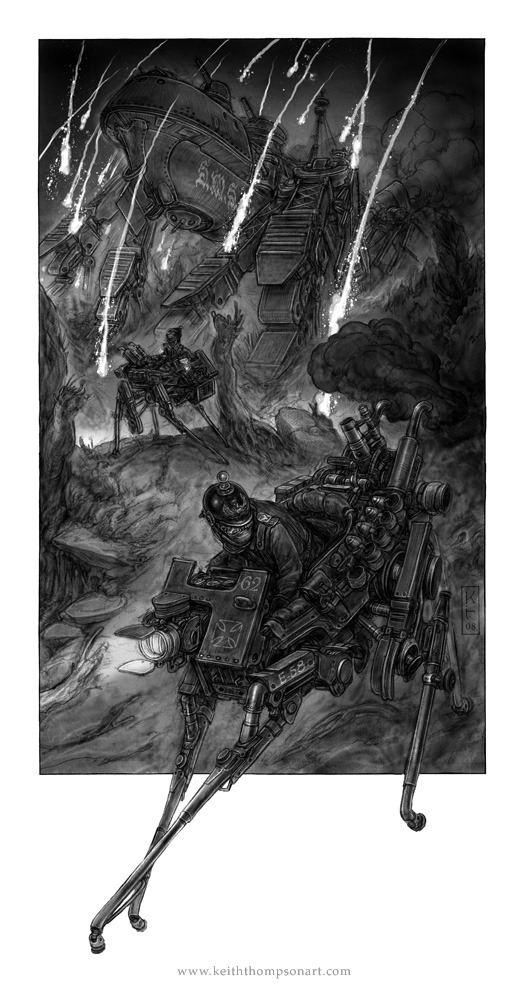
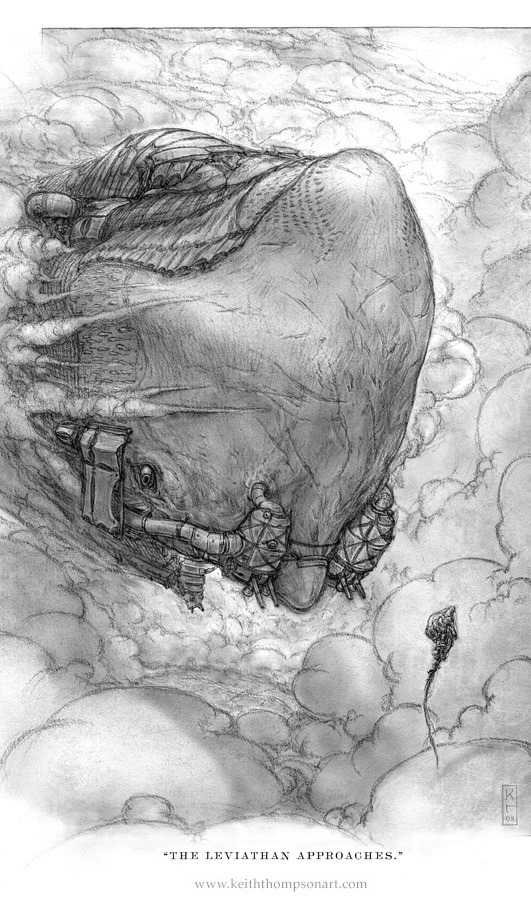

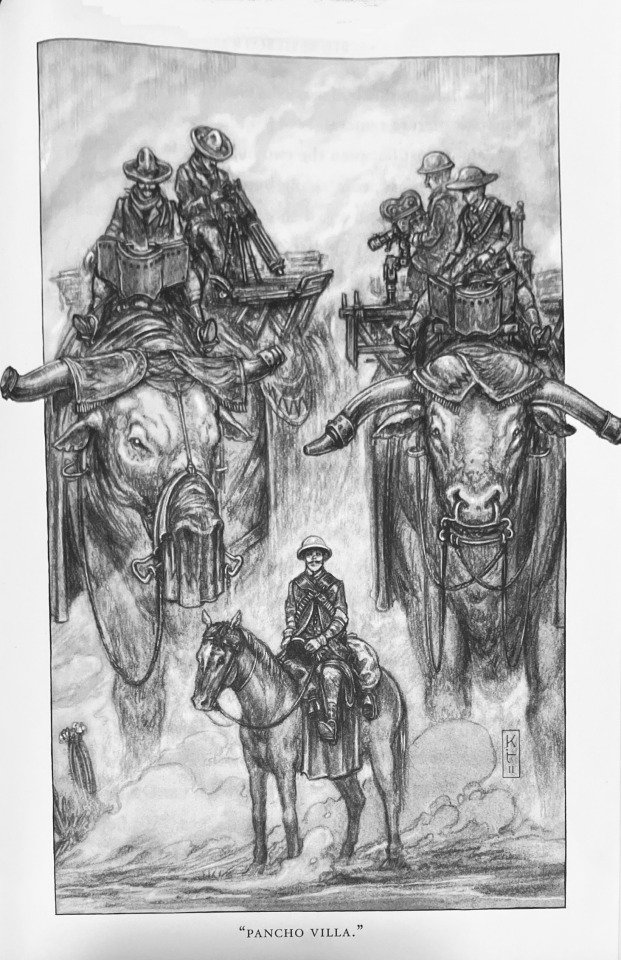
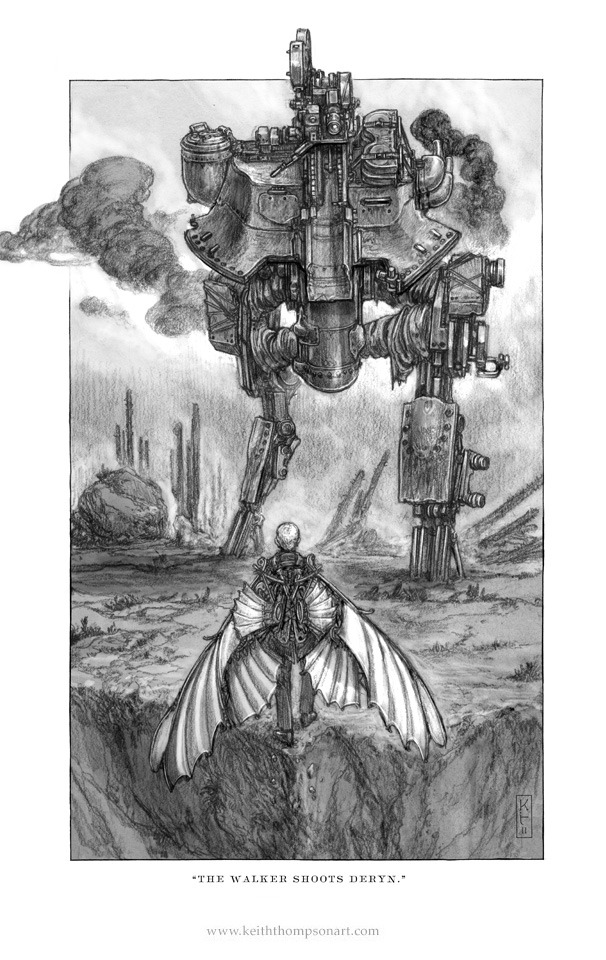
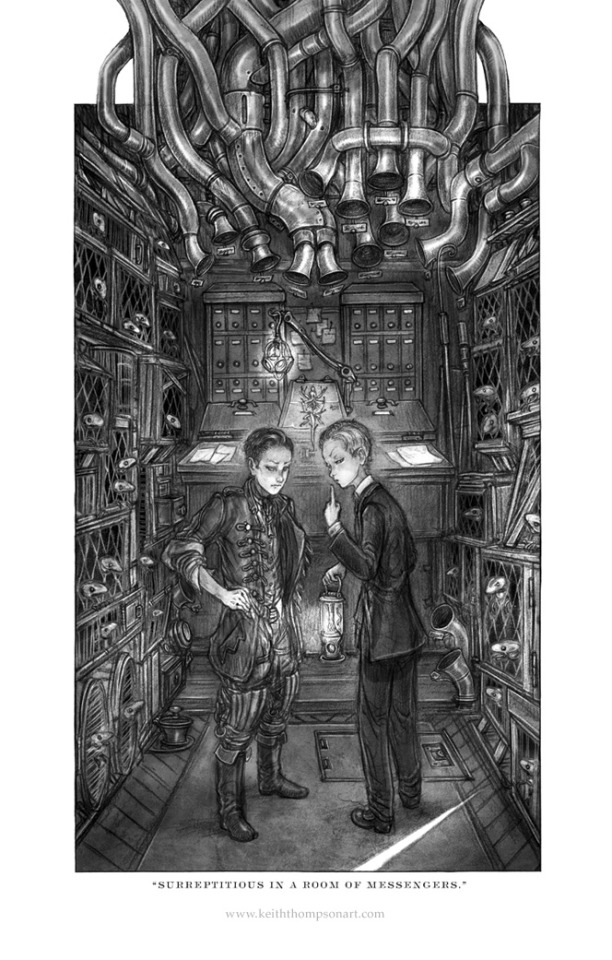


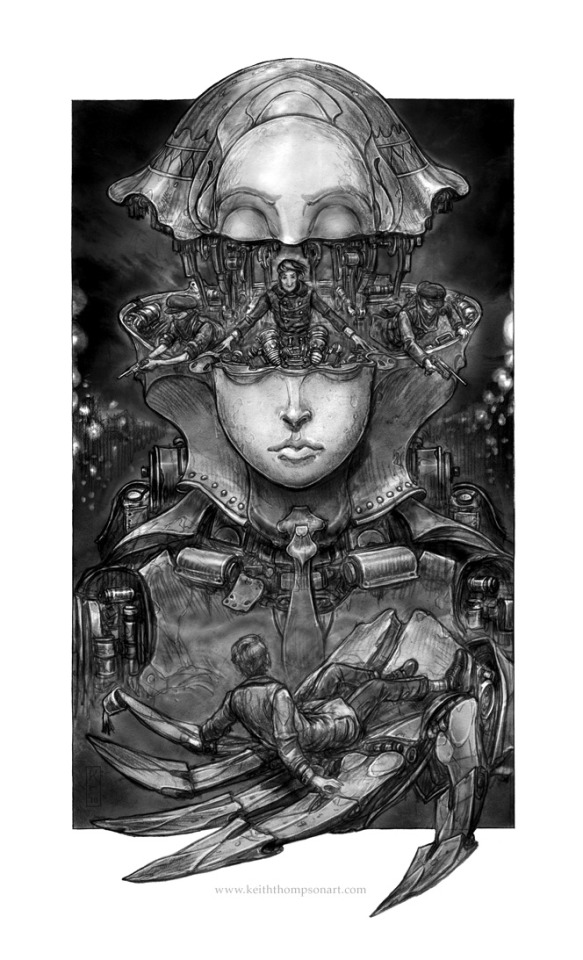

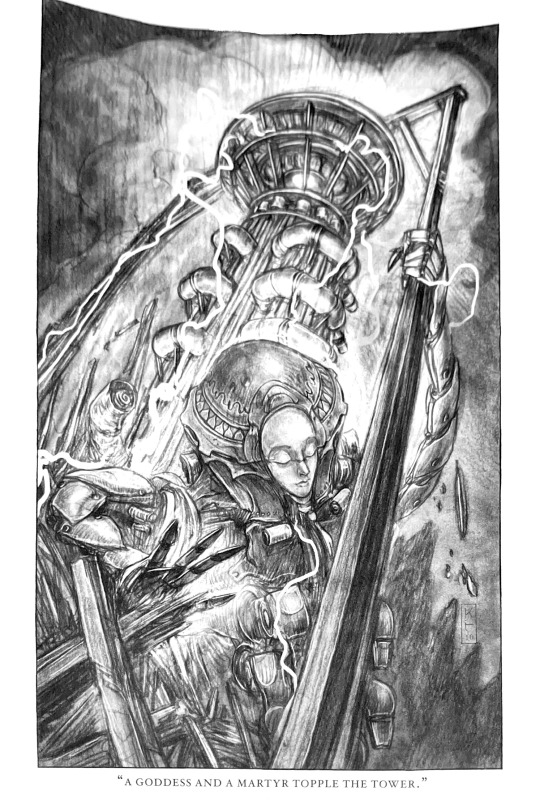
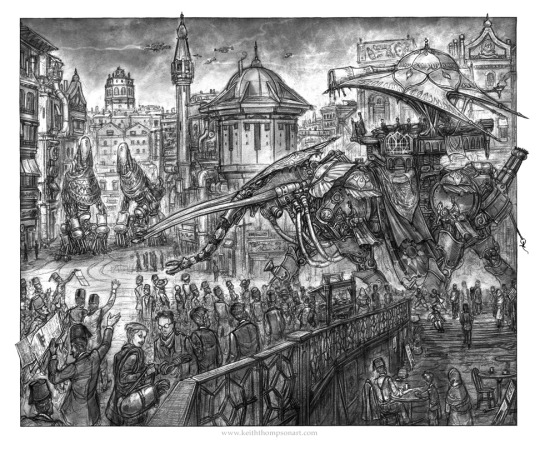




I just wanted to make a post showcasing some of my favorite illustrations by Keith Thompson for the Leviathan Trilogy.
The art went so hard in these books, it’s crazy. The plot is basically an alternate universe WW1 about the major two powers, the Darwinists, and the Clankers. The Darwinists genetically engineered animals to fight for them creating huge flying whale battleships, while the Clankers made huge robot mechs and powerful guns. A few historical people and places show up in these books, like Nikola Tesla.
But my favorite parts of the books were the art, truly breathtaking, it was beautifully grotesque at times. But that’s not unexpected, after all Keith Thompson helped create the design of Moder from The Ritual!
#art#illustration#illustrations#illustrated book#fantasy#scifi#steampunk#YA#Young Adult#keith thompson#Scott westerfeld#Leviathan#Leviathan Trilogy#Leviathan Series#Behemoth#Goliath#deryn sharp#Dylan sharp#Prince Alek#aleksander of hohenburg#historical fiction#tw body horror
781 notes
·
View notes
Text
Etsy | Commissions | Ko-Fi
Got some pocket sketchbooks for sale in the shop! Six different designs are currently available. :)
#bookbinding#books#booktok#bookstagram#bookblr#handmade books#handmade crafts#sketchbook#journal#notebook#fantasy#steampunk#natural#for sale#etsy shop#etsy seller#commissions#commissions open#ko-fi
200 notes
·
View notes
Text
612 notes
·
View notes
Text
New Release! "Go Away Girls: Vanished"
The third installment in the Go Away Girls series is now live! Click here to buy or check out my shop here on the blog! This one was a bit of a struggle as it was my Camp NaNoWriMo project but I think it turned out pretty good!
Follow me on BlogLovin.

View On WordPress
#go away girls#lesbian#lesbian fiction#LGBT#LGBT fantasy#LGBT fiction#new#new book#new release#self published#self published writer#self publishing#steampunk#steampunk book#steampunk novel
1 note
·
View note
Text

GHOST MACHINE #1 DAN QUINTANA VIRGIN EXCLUSIVE
#art#comic art#scifi art#scifi#gothic#gothic scifi#ghost machine#skulls#dark art#comic books#raven#crow#steampunk
96 notes
·
View notes
Text
REVEAL: The Department of Curiosities - Ed 2 Booktrailer #3
https://karenjcarlisle.com/2023/07/01/reveal-the-department-of-curiosities-ed-2-booktrailer-3/

Today is re-launch day for second edition of The Department of Curiosities. The new edition – with new cover and formatting – is NOW AVAILABLE in paperback and eBook.
New booktrailers for a new edition.
Revamped booktrailer #3: The Department of Curiosities – Ed 2
youtube
#books#booktrailer#ebook#new cover#new video#novel#paperback#pre-order#steampunk#steampunk adventure#steampunk book#The Department of Curiosities#video#writing#youtube
0 notes
Text
I cannot lie, tonal whiplash is my absolute favourite tool in my writing arsenal.
417 notes
·
View notes
Text

I had so much fun drawing this villainous privateer! She’s from the upcoming novel SERAPHIM, sequel to SEDITION (steampunk YA fantasy) by EM Wright 🖤
#book characters#fantasy illustration#ya fantasy#steampunk aesthetic#character illustration#character portrait#pencil drawing#ekbelsher
196 notes
·
View notes
Photo
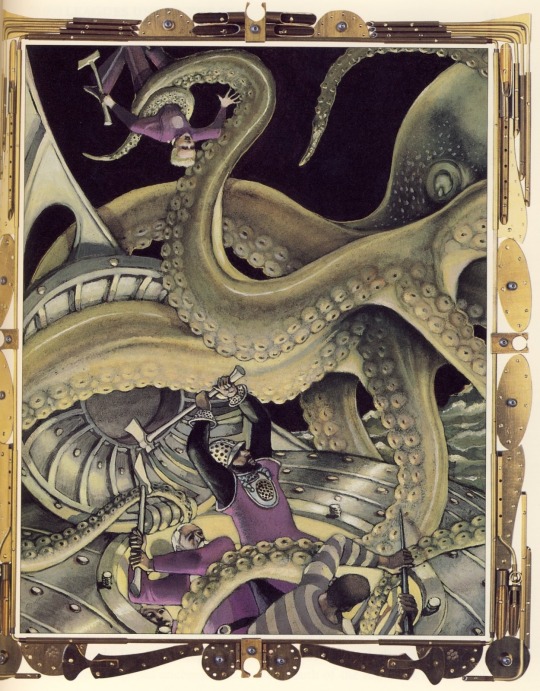
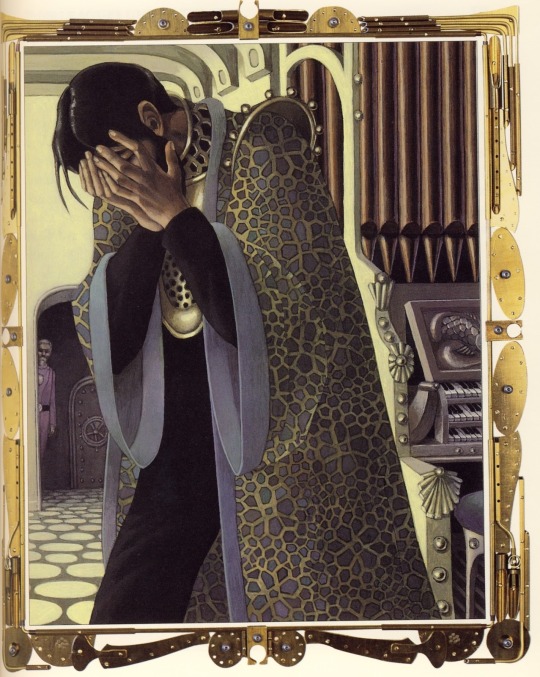

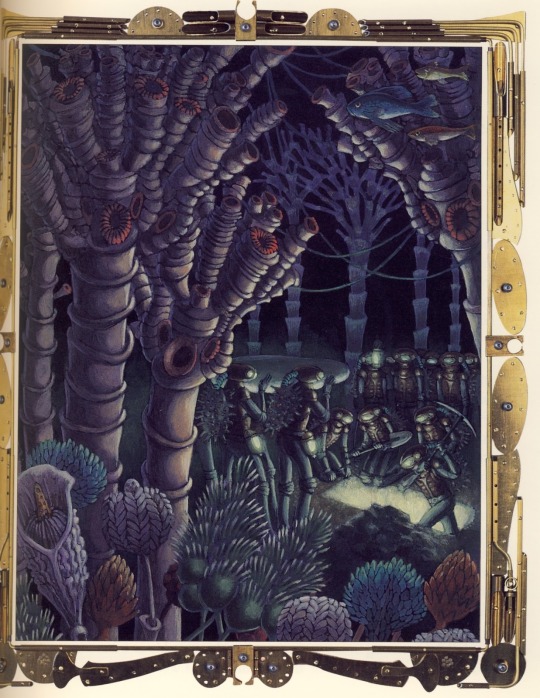
Jules Verne’s 20,000 Leagues Under the Sea illustrated by Leo and Diane Dillon, 2000.
#leo and diane dillon#jules verne#sci fi illustration#sci fi art#american art#african american art#book illustration#fantasy illustration#sea monsters#steampunk art#american illustration#art#illustration#my post
416 notes
·
View notes
Text

I just found the first french edition of the GO book! (1995!) And the cover is way nicer than the actual version!
I wonder who inspire the designs for our ineffable husbands! Crowley has horns, widow's peak hair and is (litteraly) smoking! and Azi is a twink with glasses! XD


In the back their is even a line about the infamous "soon-to-be-made american movie!" XD

Now some rambling in french:
J'adore vraiment ce design de couverture! Bien plus que celle rouge actuelle toute moche. Je trouve même qu'il y a un petit coté steampunk! J'adore leur look général à tous les 2 même si je suis pas fan de leur coiffure! Et puis Crowley qui fume! Non! (même si je sais qu'il y a des partisans! ^^) Aziraphale me rappelle quelqu'un mais je sais pas qui???
Le coup du "bientôt adapté au cinéma"! Je me demande quand ils ont su que ça se ferait pas par rapport à l'impression du livre! Et quand je pense à ce qu'aurait pu être ce film je sais pas si je dois en rire ou en pleurer! XD
La traduction est un peu différente de celle d'aujourd'hui (genre Warlock s'appelle Abbandon, alors que celle d'ajd c'est Seth) certaines phrases et descriptions sont tournées autrement, c'est fun de comparer ^^ (maintenant il faut que je trouve l'édition de 99 avec l’espèce de dragon/chimère)
@bucky1984 on a vite-fait parlé sur mon post de la couverture actuelle, t'en penses quoi de celle là?
#good omens#ineffable husbands#aziraphale#crowley#david tennant#michael sheen#neil gaiman#book#otp#lgbtq#french#movie#dark academia#light academia#steampunk#photography#my art#artist on tumblr#angel#terry pratchett
100 notes
·
View notes